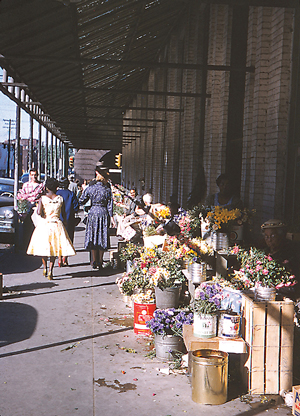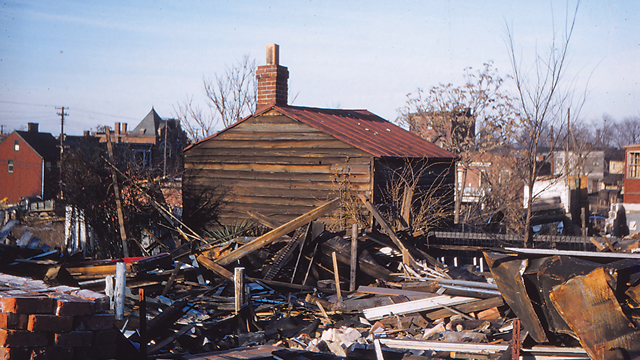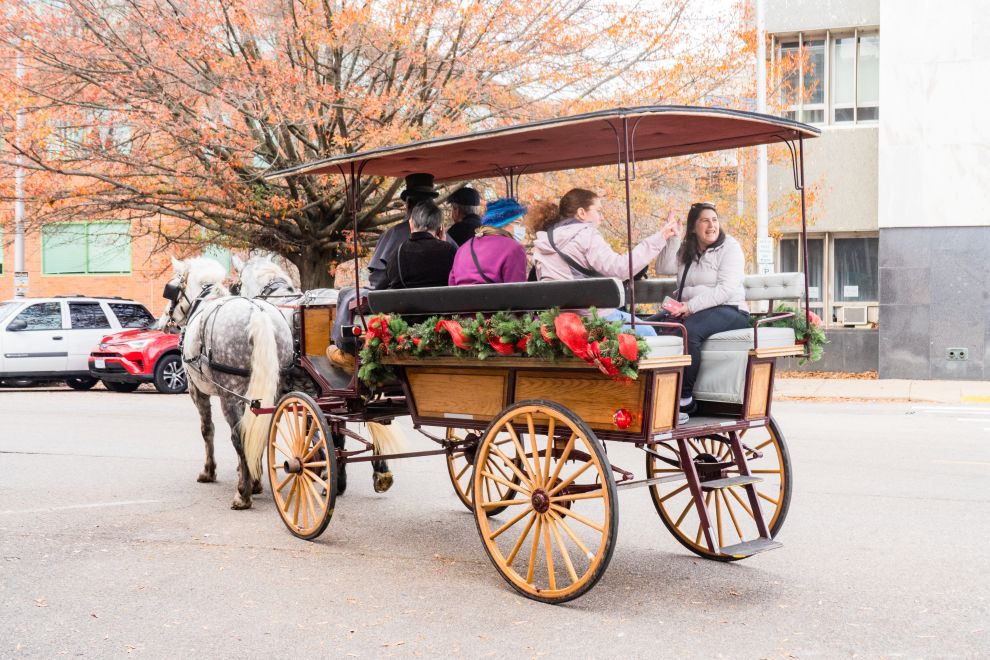After World War II, the federal GI Bill prompted a vast suburban expansion across the nation. Here in our region, cheap, subsidized tract housing lured many white Richmonders from the city to the suburbs. Compounding that, the threat of desegregation of neighborhoods and schools in the 1950s caused an increasing number of white families to flee for the suburbs.
To keep those far-flung households connected to the urban business center and to alleviate traffic congestion caused by expanding suburban development, city leaders first proposed a highway in the region in 1950. Voters overwhelmingly rejected it. Another referendum was rejected in 1951. In 1954, the city bypassed voters and asked the General Assembly to create a turnpike authority to sell bonds to pay for the road’s construction. The Richmond-Petersburg Turnpike Authority was already buying up recently condemned property by the time President Eisenhower signed the Federal-Aid Highway Act in 1956. With it, federal funds would cover 90 percent of interstate construction costs.

Through 34.7 miles, the Richmond-Petersburg Turnpike encroached on many Richmond neighborhoods, but none so much as Jackson Ward. There, more than 700 homes, churches, and businesses were razed. Once a powerhouse of Black business, the area had grown and continued to prosper despite Jim Crow laws that denied Black people access to the basic resources of dignified living – from loans to insurance to decent housing. The largely self-sufficient community supported a Black middle class and a Black upper class. In 1920, an overwhelming majority of Black Richmonders lived in Jackson Ward. Five Black-owned banks operated in the district, investing in Black progress between 1888 and 1930.
But in the 1930s, federal redlining policies – a discriminatory practice in which loans were withheld from minority neighborhoods – began to affect the neighborhood. Twenty-five years later, proponents for the highway that would run through Jackson Ward argued that damage would be minimal, since by this time, most of the buildings were substandard anyway. In fact, decades of redlining had prevented investment there, as business, construction, real estate, and home repair became nearly impossible to finance. The intentional financial strangulation of this once-thriving community led to the deterioration that then justified destroying much of the neighborhood to build the highway.
White opposition to the turnpike did exist, according to a 1955 Richmond News Leader report on a rowdy city council hearing, the opposition mostly still lived in the city and feared that displaced Black citizens would move into their neighborhoods and into their schools.
Approximately 10 percent of Richmond’s Black population was displaced by the Richmond-Petersburg Turnpike, which opened to traffic in 1958. It was the only Virginia section of I-95, the major artery along the East Coast (into which it was later incorporated), not built with federal funds. The toll road paid for itself, then funded more highways, like I-295, and required interchanges that would destroy more majority Black neighborhoods, such as Navy Hill. But nevertheless, with a speed limit of sixty miles per hour, the highway seemed like the solution for suburbanites tired of sitting through the sixty-five traffic lights along Routes 1 and 301 to get into Richmond. On the day of the ribbon-cutting, the Times-Dispatch reported that 50,000 vehicles arrived to give the new highway a roll. On that day, all four lanes backed up, and it took almost four hours to drive from Richmond to Petersburg.
Photography: courtesy The Valentine





